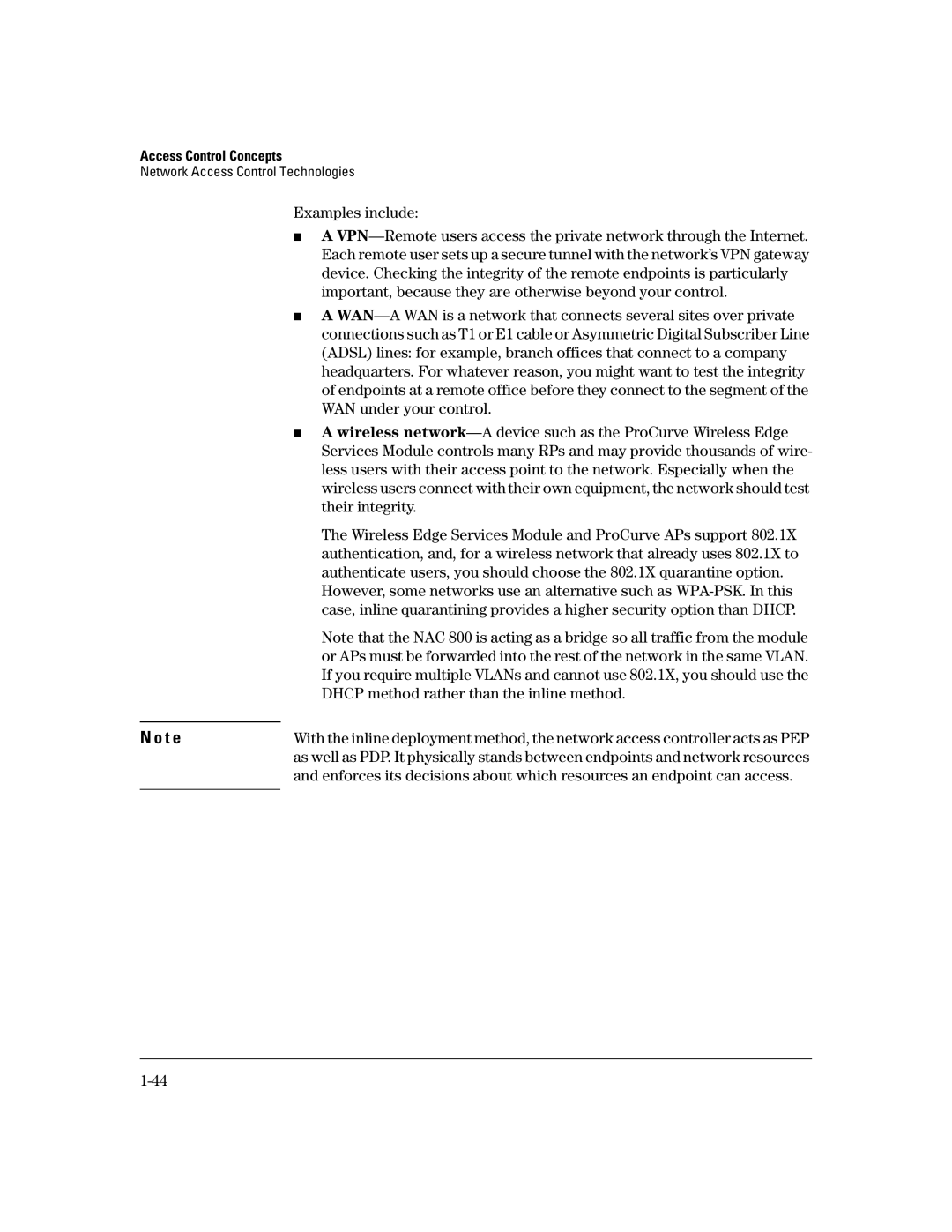
Access Control Concepts
Network Access Control Technologies
Examples include:
■A
■A
■A wireless
The Wireless Edge Services Module and ProCurve APs support 802.1X authentication, and, for a wireless network that already uses 802.1X to authenticate users, you should choose the 802.1X quarantine option.
However, some networks use an alternative such as
Note that the NAC 800 is acting as a bridge so all traffic from the module or APs must be forwarded into the rest of the network in the same VLAN. If you require multiple VLANs and cannot use 802.1X, you should use the DHCP method rather than the inline method.
N o t e | With the inline deployment method, the network access controller acts as PEP |
| as well as PDP. It physically stands between endpoints and network resources |
| and enforces its decisions about which resources an endpoint can access. |
|
|
